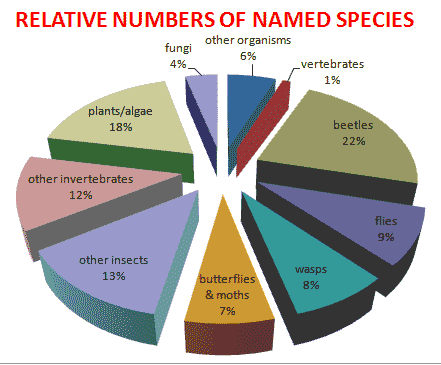Counting the Microcosmos
Blogger: NIWA biodiversity scientist Dennis Gordon
“God has an inordinate fondness for beetles,” British geneticist J.B.S. Haldane once quipped.
That’s because there are more named beetle species than any other form of life. The same might be said of worms. You might not realise it but vermiform (worm-like) is the most widely adopted shape in the animal kingdom.
 There are flatworms and tapeworms, ribbon worms, spoon worms, peanut worms, arrow worms, eel worms and round worms, acorn worms, velvet worms, goblet worms, horseshoe worms, bristleworms, penis worms, and even worm-shaped crustaceans (tongue worms), echinoderms (sea cucumbers), fish (lampreys, hagfish, eels), amphibians (caecilians) and reptiles (snakes).
There are flatworms and tapeworms, ribbon worms, spoon worms, peanut worms, arrow worms, eel worms and round worms, acorn worms, velvet worms, goblet worms, horseshoe worms, bristleworms, penis worms, and even worm-shaped crustaceans (tongue worms), echinoderms (sea cucumbers), fish (lampreys, hagfish, eels), amphibians (caecilians) and reptiles (snakes).
In total, 1.9 million species of life have been named globally, and we’re still counting. In New Zealand and around the world the rate of discovery of new species exceeds the capacity to name and classify it – there is a desperate shortage of taxonomists.*
As you will know, this year is the Year of Biodiversity – a celebration of all life forms from bacteria to blue whales.
Over the past ten years I have been coordinating a global effort (involving 222 scientists in 18 countries) to quantify the number of living and fossil species that we have in New Zealand. So far, we’ve clocked up 54,200 living species (with 8000 not yet named) and around 14,000 fossil ones, but we can expect tens of thousands more species to be discovered, not counting bacteria.
The 582 page first volume of the inventory has been published, and there’s another two that are following hot on their heels. And at the rate we’re discovering new species, it’s likely there will be innumerable additions to the online version over the years.
Our native biodiversity is super special, with heaps of species, genera, families and some higher taxa found nowhere else in the world. New Zealand has a little over 28,570 endemic species all environments. We MUST protect our unique natural heritage.
And new discoveries happen almost every day. In the world’s first marine BioBlitz, on Wellington’s south coast in 2007, more than 20 new species were found at Island Bay, including a mysterious creature that has become New Zealand’s first named acoel.
What’s an acoel? It’s a group of tiny worms that used to be classified as flatworms but are now thought to be the most primitive bilateral animals (a tad higher on the rung of life than jellyfish).
So if you’re going into our deep blue yonder, or out into the forest take note of the little stuff, you could become a discoverer yourself!
